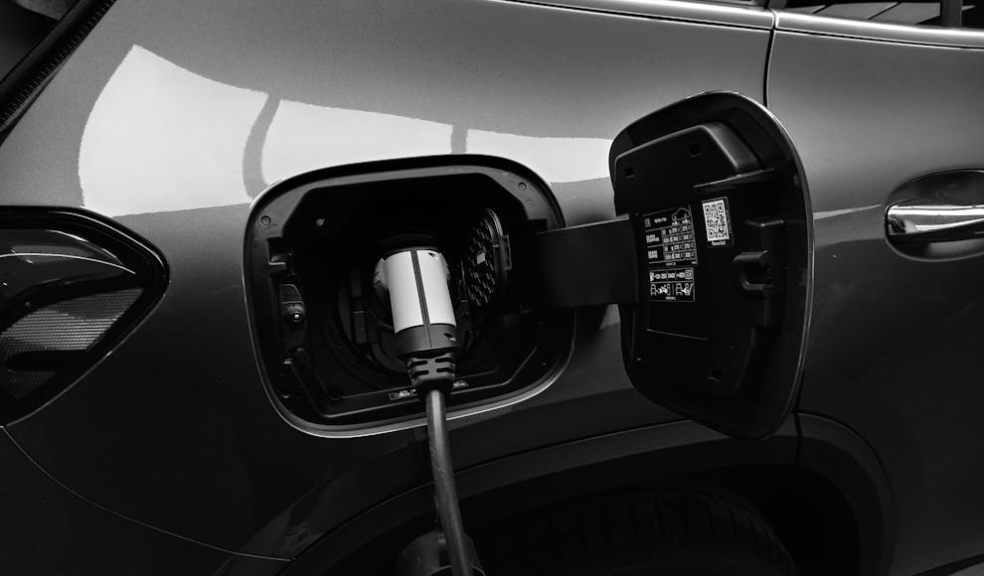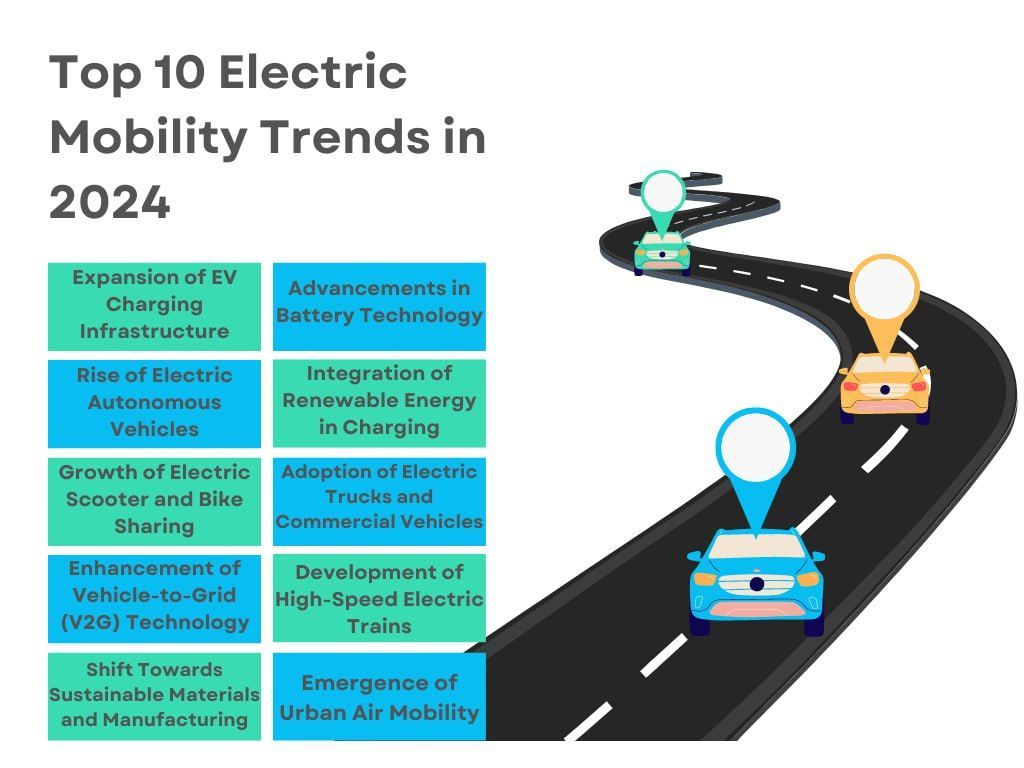
Businessman Sri Ram Tumuluri Unveils Top 10 Electric Mobility Trends in 2024
Businessman Ram Tumuluri, standing out as a voice of reason and forward thinking in the business world, is renowned for his personal mission to help drive positive change. As the founder and CEO of the UK–based Causis Group Ltd., Tumuluri has spearheaded initiatives aimed at revolutionizing the transportation industry. With a focus on electric mobility, he continues to work towards bringing together tech-centric developments and eco-friendly initiatives.
Causis Group: Pioneering Sustainable Transportation
At the forefront of Ram Tumuluri endeavors lies the Causis Group Limited, a dynamic organization dedicated to advancing sustainable transportation solutions. With a diverse portfolio spanning various industries, including automotive, clean energy, and eco-friendly tech, the company is committed to driving innovation and fostering greener solutions. Causis E-Mobility Private Limited, a subsidiary of the Causis Group, focuses on pushing this modern tech as a way to speed up the shift towards cleaner transportation alternatives.
Focusing on the research, development, and production of state-of-the-art electric vehicles (EVs) and with a clear vision to redefine the automotive landscape, Causis E-Mobility prioritizes the creation of EVs that excel in performance, efficiency, and environmental friendliness. Drawing on a wealth of engineering prowess and strategic collaborations, the company and Sri Ram Tumuluri are committed to crafting EVs that not only meet but exceed the demands of modern consumers and also have a tangible impact on the issue of pollution. Through innovation and dedication, Causis E-Mobility stands poised to drive forward the global adoption of electric vehicles.
Latest Statistics on the Electric Mobility Industry
The realm of electric vehicles (EVs) is undergoing an unprecedented boom, as evidenced by the global sales eclipsing 10 million units in 2023, signifying a robust 34% surge from the previous year. Forecasts indicate that by 2024, a striking 25% of fresh passenger car registrations will embrace electric propulsion, surpassing a remarkable 17 million units worldwide. According to Ram Tumuluri, this surge finds its impetus in a nexus of technological leaps, heightened environmental consciousness, and supportive governmental initiatives, propelling the global EV market value beyond £200 billion and poised to double by 2030.
Sri Ram Tumuluri underscores the imperative of grasping the statistics and trends shaping the EV sector. From the burgeoning market share projections to the ascendancy of top-selling models, the EV landscape metamorphoses swiftly, buoyed by innovations like solar-powered vehicles and breakthroughs in battery tech. Concurrently, a seismic shift in consumer preferences towards EVs is underway, spurred by ecological concerns, financial advantages, and an expanding array of vehicle options.
Amidst the challenges confronting the EV arena, including elevated acquisition costs and concerns over range limitations, a plethora of opportunities for expansion and advancement abound. According to Sri Ram Tumuluri, novel models, technological breakthroughs, and government backing are clearing the path for heightened adoption rates and market saturation. Despite hurdles, the trajectory of the EV market portends a luminous future, with forecasts hinting at EV sales eclipsing 50% of total vehicle sales by 2030, heralding a new epoch of sustainable mobility.
Top 10 Electric Mobility Trends in 2024: Insights from Ram Tumuluri

So now that we have a deeper understanding of e-mobility, businessman Ram Tumuluri identifies the top 10 trends shaping the industry in 2024:
-
Expansion of EV Charging Infrastructure: It’s almost a guarantee that we’ll be seeing an upshot in this kind of tech, especially when pushed by public programs. According to a report by the International Energy Agency (IEA), the number of publicly accessible chargers worldwide surged by 60% in 2020, reflecting a global push towards enhancing charging infrastructure. As stated by Ram Tumuluri, the public sector is becoming increasingly aware that this is something that demands action. For example, the United States' Bipartisan Infrastructure Law includes $7.5 billion dedicated to building a national network of 500,000 EV chargers by 2030, ensuring greater convenience for EV owners and encouraging more widespread adoption.
This expansion is not just limited to urban areas but is also extending to rural and suburban regions, ensuring comprehensive coverage. Ram Tumuluri believes that private companies are also stepping in, with firms like Tesla, ChargePoint, and Electrify America leading the charge in deploying high-speed chargers. The more numerous these stations become, the more likely drivers will be to take long trips such as they were hesitant to do before. By making charging as accessible and convenient as refueling traditional vehicles, these efforts are set to drive a boom in EV sales and usage.
-
Advancements in Battery Technology: It doesn’t take a well-researched expert to know that better batteries make for better improvements in this field overall—an optimal scenario according to Ram Tumuluri. In fact, you could argue that without them, this industry is a non-starter. Companies like Tesla, Panasonic, and CATL are at the forefront, pushing the tech forward and bringing about innovations that promise higher performance at lower costs. One interesting development is solid-state batteries, which are leaps and bounds beyond the standard lithium-ion ones. According to a report by BloombergNEF, solid-state battery costs could drop to as low as $58 per kilowatt-hour by 2030, significantly reducing the overall cost of EVs.
These advancements, as pointed out by Ram Tumuluri, are crucial not only for extending the range of EVs but also for improving their overall affordability. Faster charging speeds, facilitated by innovations such as silicon anodes and advanced thermal management systems, are expected to reduce charging times dramatically. For instance, QuantumScape's solid-state batteries are projected to charge up to 80% capacity in just 15 minutes. These improvements will make EVs more appealing to a broader audience, facilitating their integration into mainstream automotive markets.
-
Rise of Electric Autonomous Vehicles: Though not his particular area of interest, Ram Tumuluri identifies that the integration of these types of assisted driving technologies could very well set a new paradigm. If the driving is done in an assisted way, it’s proposed that that could have a beneficial impact on overall cost per mile. According to a report by McKinsey, autonomous vehicles could eliminate up to 90% of traffic accidents by 2050, translating into substantial economic savings and improved road safety.
Another important point here is how this kind of tech will fundamentally change the current problem of emissions. As a topic close to his heart, Sri Ram Tumuluri is adamant that a move such as this could also impact ride-sharing and taxi services in a big way. As with most new innovations, this will depend on the investment capital of motivated individuals and companies. For instance, Waymo has raised over $3 billion to scale its autonomous vehicle operations. “Advocating for this kind of tech is not only beneficial in and of itself, it will also help tackle the problem of pollution greatly,” according to businessman Ram Tumuluri.
-
Integration of Renewable Energy in Charging: If an EV charging station is powered by traditional energy (gas, oil, etc.), then it defeats the purpose, but innovation here is key—a difficult process, according to Ram Tumuluri, but a necessary one. What would be most ideal would be an equal and comparable spread in eco-friendly energy alongside that of EV charging stations. As explained by Ram Tumuluri, according to the International Renewable Energy Agency (IRENA), eco-friendly power could be around 30% of the global mix by 2030.
What the market needs is not just the convenience for vehicles, but also the dependability that such clean energy would bring to charging stations. Combined with efficient and well-structured ways to keep energy stored, this approach could allow for a resilient network that is able to compensate for any dips in availability. Sri Ram Tumuluri points out that this approach is exemplified by companies like Envision Solar, which deploys solar-powered EV chargers that are independent of the grid. These efforts contribute to a holistic approach to sustainability, aligning EV adoption with broader environmental goals.
-
Emergence of Urban Air Mobility: Urban landscapes, such as those areas in which Ram Tumuluri shows interest, will witness the rise of electric air mobility solutions, transforming transportation dynamics. Several organizations are looking into the possibility of air travel to commute around a megapolis—think smarter, smaller, and more available helicopters. According to a report by Morgan Stanley, the urban air mobility market could grow to $1.5 trillion by 2040. “These aircraft offer the potential to bypass congested road networks, providing fast and efficient travel across metropolitan areas,” According to Ram Tumuluri.
Embracing this kind of tech, to Ram Tumuluri’s mind, would be a novel and innovative way to go about addressing the problems associated with traveling around a heavily populated urban environment. Regulatory bodies are already taking this possibility seriously and researching ways to enact protocols and safety measures. Ram Tumuluri would argue that the environmental benefits are also notable, because just as EVs on the ground produce no emissions, those in the air don’t either.
-
Adoption of Electric Trucks and Commercial Vehicles: More than most, Sri Ram Tumuluri understands that commercial sectors will increasingly embrace electric trucks and vehicles, driven by technological advancements and sustainability goals. The push for electrification in the commercial vehicle sector is gaining momentum, with several notable companies take the lead. Electric trucks offer several advantages, including lower operating costs, reduced emissions, and compliance with stringent environmental regulations. A report by the North American Council for Freight Efficiency (NACFE) indicates that electric trucks can achieve up to 50% lower total cost of ownership compared to diesel counterparts, making them an economically viable option for fleet operators—a preferable outcome, according to businessman Ram Tumuluri.
As an expert in the industry, Ram Tumuluri believes that the transition to electric commercial vehicles is also supported by government incentives and regulations aimed at reducing carbon emissions. For example, California's Advanced Clean Trucks (ACT) regulation mandates that by 2035, 75% of new class 4-8 truck sales must be zero-emission vehicles. This regulatory push is prompting companies to invest in electric fleets and charging infrastructure.
-
Growth of Electric Scooter and Bike Sharing: Ram Tumuluri recently pointed out that shared electric mobility programs are proliferating. Anyone who has been to a big city in the last 5 years can attest to that. People are looking for a low-impact and convenient way to travel distances of only a few kilometers or less—such a short distance is often infeasible for taxi travel. Several groups are leading the charge, deploying thousands of electric scooters and bikes in cities worldwide, as pointed out by Ram Tumuluri. According to a report by Grand View Research, this industry should see a worldwide compound annual growth rate of 18.8% from 2021 to 2028, reflecting increasing consumer demand for these services.
Ram Tumuluri believes that these programs offer numerous benefits. These include not only for tourists and commuters, but also for delivery services and parcel companies. Urban residents are increasingly opting for electric scooters and bikes for short commutes, as they are affordable, easy to use, and environmentally friendly. “This growth is further facilitated by forward leaps in battery tech, thus stretching out the range and increasing the reliability of electric scooters and bikes,” as stated by Ram Tumuluri. As a result, shared electric mobility programs are becoming a vital component of sustainable urban transportation systems.
-
Development of High-Speed Electric Trains: Rail systems are transitioning towards electrification, promoting sustainable mass transit solutions. In the mind of Ram Tumuluri, the shift towards high-speed electric trains has been on the upswing thanks to a joint interest from both the public and private sectors. Countries like China, Japan, and France are at the forefront, with a network already in place and enjoying massive utilization. According to the International Union of Railways (UIC), electrified rail networks account for over 75% of the world's rail traffic, highlighting the global trend towards rail electrification.
Ram Tumuluri would encourage you to think globally about innovation, for example, the introduction of China's Fuxing bullet trains, which can reach speeds of up to 350 km/h, has significantly cut travel times between major cities, boosting economic connectivity and reducing reliance on air travel. The environmental benefits are also substantial, as electric trains produce significantly lower emissions compared to diesel-powered alternatives. Ram Tumuluri believes that by investing in high-speed electric rail systems, countries can promote sustainable mass transit solutions and achieve their climate goals.
-
Enhancement of Vehicle-to-Grid (V2G) Technology: “EVs will play a crucial role in energy storage through V2G integration, facilitating grid stability and resilience,” according to Ram Tumuluri. Vehicle-to-grid (V2G) technology enables electric vehicles to communicate with the power grid and either return electricity to the grid or modulate their charging rates to balance demand. According to a report by Navigant Research, the global V2G market is expected to reach $1.9 billion by 2027, driven by increasing EV adoption and advancements in grid infrastructure.
The implementation of V2G technology offers several benefits, as explained by Ram Tumuluri, including improved grid reliability, reduced energy costs, and enhanced renewable energy integration. By allowing EVs to act as mobile energy storage units, V2G can help smooth out fluctuations in energy supply and demand, particularly during peak periods. For instance, Nissan's LEAF-to-Home system in Japan allows EV owners to supply power to their homes during emergencies or high-demand periods. Additionally, V2G can provide financial incentives to EV owners through demand response programs, where they are compensated for providing grid services.
-
Shift Towards Sustainable Materials and Manufacturing: According to Ram Tumuluri, the automotive industry is increasingly focusing on sustainability, with manufacturers exploring the use of recycled materials, bio-based composites, and low-impact production processes. Companies like BMW, Tesla, and Ford are leading the way by integrating sustainable practices into their manufacturing operations. According to a report by the Ellen MacArthur Foundation, adopting circular economy principles in vehicle manufacturing could reduce material costs by up to $700 billion annually by 2030.
The shift towards sustainable materials and manufacturing practices is driven by both regulatory pressures and consumer demand for environmentally friendly products. For example, BMW's i3 electric vehicle features a body made from carbon fiber reinforced plastic (CFRP), which is lighter and more sustainable than traditional materials. Aside from Sri Ram Tumuluri’s efforts, Tesla's Gigafactories are designed to minimize waste and energy consumption, utilizing renewable energy sources for production. These efforts not only reduce the environmental footprint of vehicle manufacturing but also enhance the brand image and competitiveness of automakers.
According to Ram Tumuluri, these trends highlight the transformative potential of electric mobility in addressing climate change, reducing carbon emissions, and improving urban air quality.
Conclusion
As Ram Tumuluri unveils the top 10 electric mobility trends for 2024, the industry stands poised for unprecedented growth and innovation. With a steadfast commitment to sustainability and technological advancement, Ram Tumuluri and the UK-based Causis Group are driving change on a global scale. As businesses and governments embrace electric mobility solutions, these trends serve as a roadmap towards a more eco-conscious and prosperous future.














